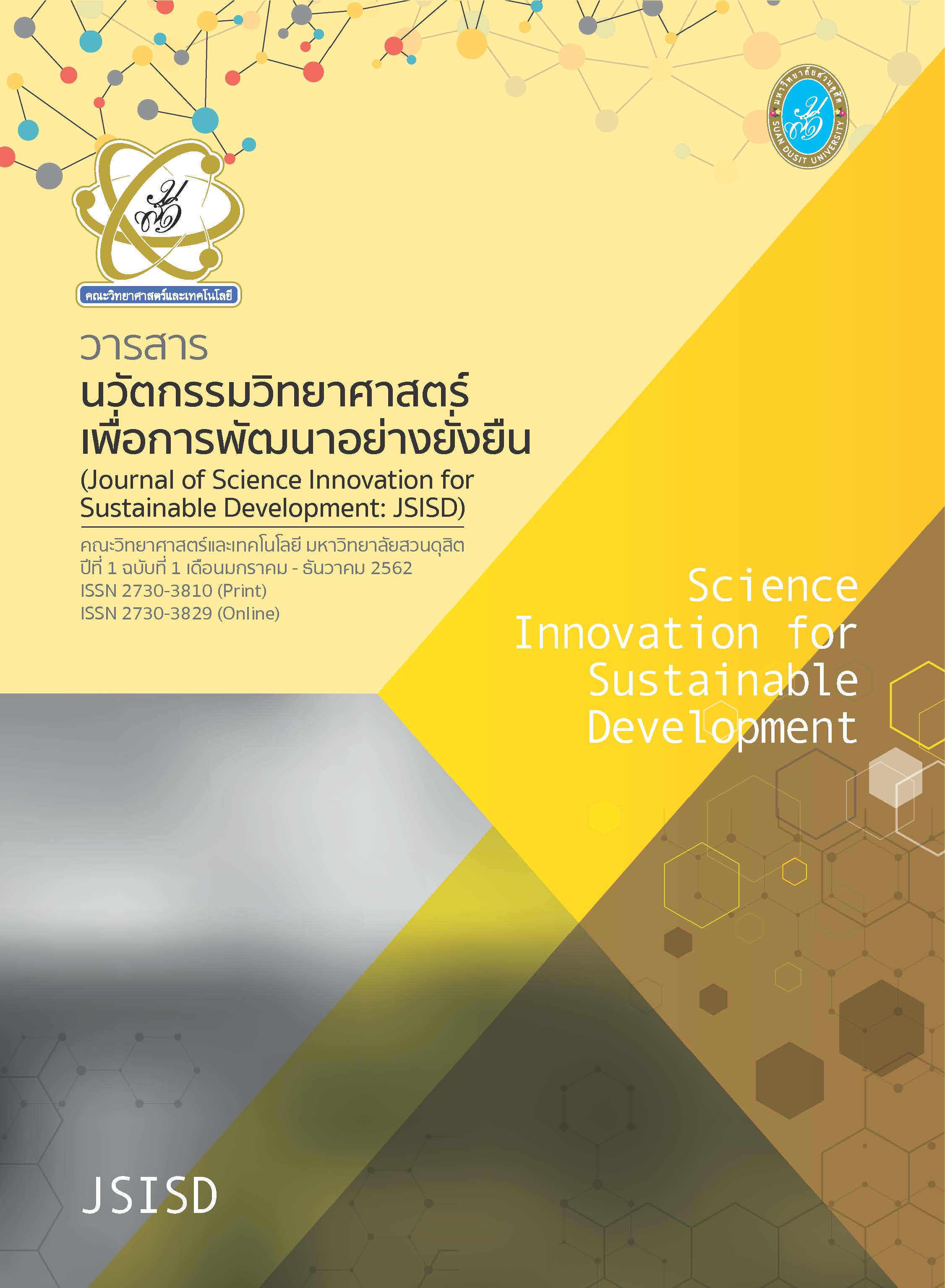การออกแบบและพัฒนาชุดการทดลองการเคลื่อนที่แบบฮาร์มอนิกอย่างง่ายของมวลติดสปริงด้วย Arduino สาธิรัช สะสม* และ เมทิตา จุปะมะโท
Main Article Content
บทคัดย่อ
บทความวิจัยนี้ศึกษาเกี่ยวกับการออกแบบและพัฒนาชุดการทดลองการเคลื่อนที่แบบฮาร์มอนิกอย่างง่ายของมวลติดสปริงด้วย Arduino มีวัตถุประสงค์เพื่อ 1) ศึกษาค่าคงที่ของสปริงติดมวล และความสัมพันธ์ระหว่างมวลและค่าคงที่ของสปริงติดมวล และคาบการเคลื่อนที่ของสปริง 2) พัฒนาสื่อการสอนทางฟิสิกส์เรื่อง การเคลื่อนที่แบบฮาร์มอ- นิกอย่างง่ายของมวลติดสปริง โดยใช้ Arduino ผลการทดลองทำโดยการแขวนมวลติดสปริง 100 200 250 และ 300 กรัม ตามลำดับ หาค่าคงที่ของสปริง โดยใช้ Arduino พบว่าคาบที่ได้จากการวัดโดยใช้ Arduino มีค่าเท่ากับ 4.29 2.14 1.50 และ 1.25 วินาที ตามลำดับ และค่าคงที่ของสปริงมีค่า 0.4534 นิวตัน/เมตร และการหาค่าคงที่ของสปริงจากกฎของฮุคโดยการแขวนมวลติดสปริง 100 150 200 250 และ 300 กรัม พบว่าระยะยืดที่ได้จากการทดลอง มีค่าเท่ากับ 1.56 4.00 6.26 8.53 และ 10.83 เซนติเมตร ตามลำดับ ค่าคงที่ของสปริงมีค่าเท่ากับ 0.4634 นิวตัน/เมตร จากการทดลองหาค่าคงที่ของสปริง โดยใช้ Arduino และ การหาค่าคงที่ของสปริงจากกฎของฮุค พบว่ามีค่าคลาดเคลื่อนไม่เกิน 2 เปอร์เซนต์
Article Details

อนุญาตภายใต้เงื่อนไข Creative Commons Attribution-NonCommercial-NoDerivatives 4.0 International License.
ลิขสิทธิ์ต้นฉบับที่ได้รับการตีพิมพ์ในวารสารนวัตกรรมวิทยาศาสตร์เพื่อการพัฒนาอย่างยั่งยืนถือเป็นกรรมสิทธิ์ของคณะวิทยาศาสตร์และเทคโนโลยี มหาวิทยาลัยสวนดุสิต ห้ามผู้ใดนำข้อความทั้งหมดหรือบางส่วนไปพิมพ์ซ้ำ เว้นแต่จะได้รับอนุญาตอย่างเป็นลายลักษณ์อักษรจากคณะวิทยาศาสตร์และเทคโนโลยี มหาวิทยาลัยสวนดุสิต นอกจากนี้ เนื้อหาที่ปรากฎในบทความเป็นความรับผิดชอบของผู้เขียน ทั้งนี้ไม่รวมความผิดพลาดอันเกิดจากเทคนิคการพิมพ์
เอกสารอ้างอิง
Amrani, D & Paradis, P. (2010). Use of computer-based data acquisition to teach physics laboratories: case study-simple harmonic motion. Physics Education, 4(3), 511-514.
Tong-on, A., Saphet, P.& Thepnurat, M. (2017). Simple harmonics motion experiment basedon labview interface for Arduino. Journal of Physics, 17, 1-6.
Musik, P. (2017). Development of computer-based experiment set on Simple Harmonic Motion of mass on springs.The Turkish Online Journal of Educational Technology –October 2017,16(4), 1-11.


